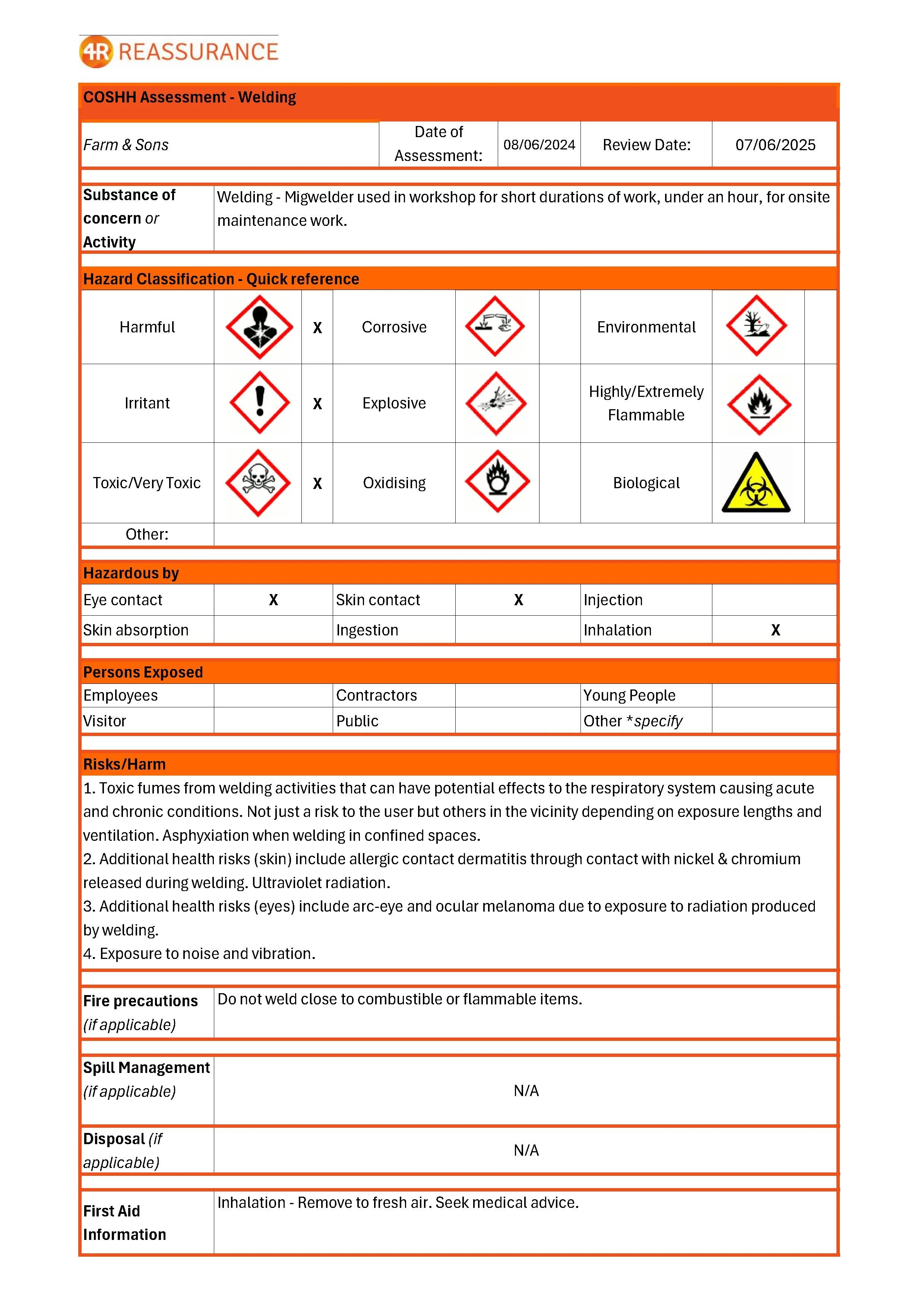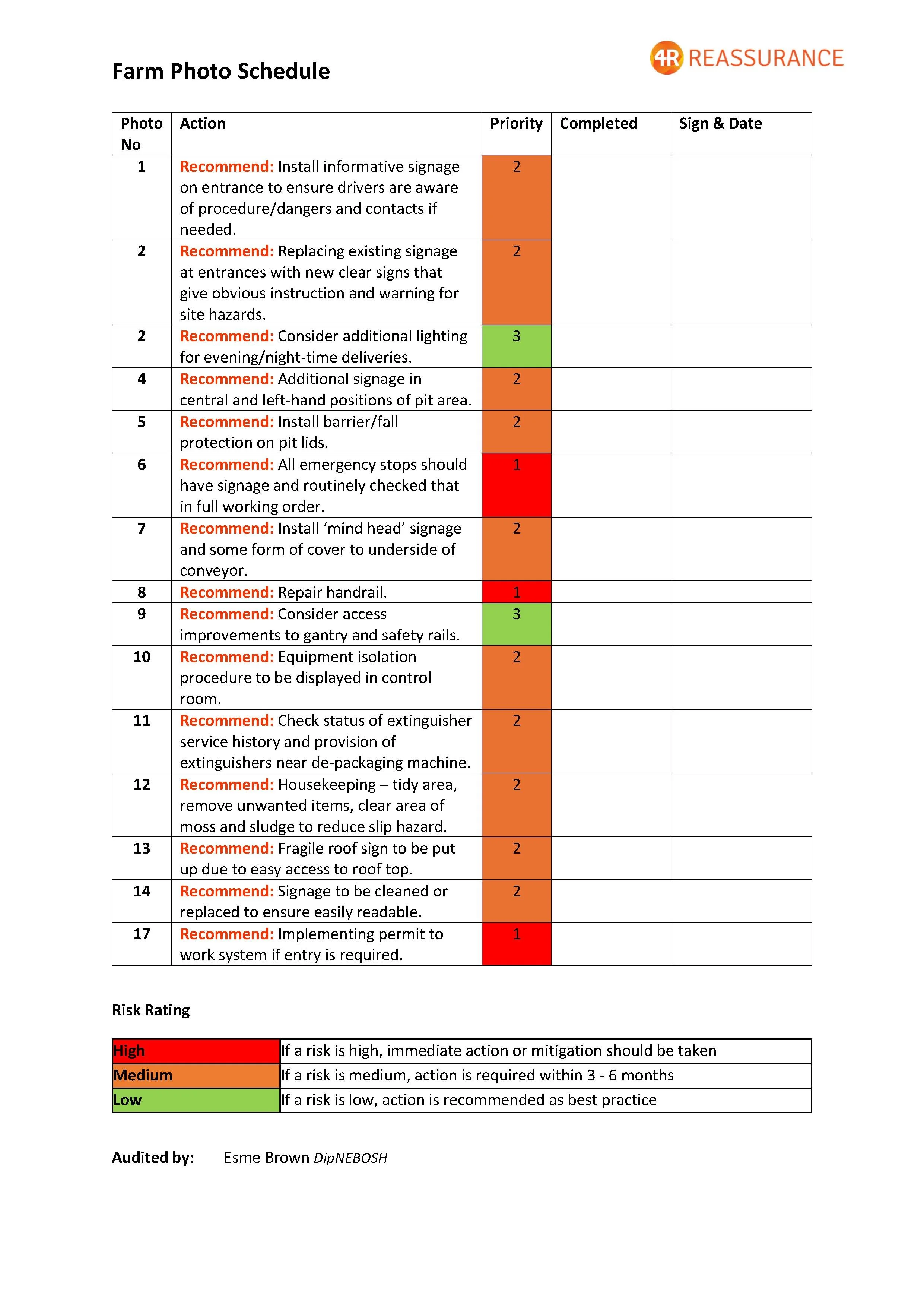Farm Health and Safety
A Different Approach
We tailor our approach to your specific situation, whether you're adopting a formal plan for the first time or updating an existing policy. Our goal is to create a Farm Health and Safety File that serves as your go-to guide for safety, helps with staff training, supports HSE inspections, and gives you peace of mind.
Our comprehensive Farm Health and Safety File includes:
Farm Folder
To help you and your team, a bespoke folder will be compiled to include information such as photos of your farm and equipment, detailed site plans, and emergency procedures. In addition, there will be a traffic light priority system plan highlighting any areas needing improvement and the order in which they should be completed. The folder will be available in both physical and electronic formats.
Dedicated Farm Support
You will be allocated a dedicated 'farm support' individual who will be your day-to-day contact and will carry out each of the quarterly visits, updates, and revisions.
All of our team have agricultural and rural backgrounds and many are actively involved in their spare time.
Customisable Visits
The content of each quarterly visit will be agreed with you in advance to maximise its effectiveness. This is often guided by seasonality - for example, lambing, planting, harvesting, summer holidays, winter maintenance - or by your priority, such as:
✔ HSE Inspection - pre-inspection audits
✔ Staff Inductions – H&S awareness training and induction
✔ Harvest Training – staff training and toolbox talks
✔ Diversification – site audits and information packs
✔ Farm Event – pre-event audit and traffic management plans
✔ New Buildings – construction phase plans
✔ Mental Health – awareness and signposting
One Step at a Time
✔ We do not overwhelm you and your staff with mountains of paperwork
✔ Start with the highest priority task - often on a risk basis
✔ Then complete additional tasks each visit - multiple visits keep the process moving forwards
✔ Staff engagement is crucial - they are typically most at risk
✔ Staff input to forms via interactive training “we do it this way”
Farming is a vital and rewarding profession, but it comes with its share of risk and a busy schedule, which can make health and safety management feel overwhelming. Whether you have fewer than five employees or more, paid or unpaid, part-time, full-time, or seasonal, you have a legal responsibility to ensure their safety.
For example, The Management of Health and Safety at Work Regulations 1999 outlines that every employer has legal duties regarding the health and safety of their employees and the public. Employers are required to have a written health and safety policy and risk assessments if they employ more than five staff. However, even with fewer than five employees, you must conduct risk assessments and be able to provide evidence of this in the event of an investigation. Best practice is to have written policies, risk assessments, and safe systems of work in place. Additionally, The Control of Substances Hazardous to Health (COSHH) Regulations 2002 requires employers to control the risk of exposure to hazardous substances.
These are just a few examples of legal requirements that employers are legally required to ensure health and safety of their employees.
If the worst does happen, you’ll be prepared by following HSE legislation and guidelines, providing everyone with the necessary instruction, information and training.
We understand that just one visit can’t ensure lasting health and safety. A generic H&S file, used repeatedly, doesn’t protect you. We believe in tailored solutions to keep your farm and workers safe.
Our services are designed to help you meet legal health and safety requirements seamlessly.
Our Aim: For you to Fulfill your Legal Obligations
Why prioritise farm health and safety?
Prioritising farm health and safety is crucial because it protects the well-being of both farmers and the environment. By implementing proper farm safety protocols and equipment, farmers can prevent accidents and reduce the risk of injuries while also ensuring responsible land management.

















